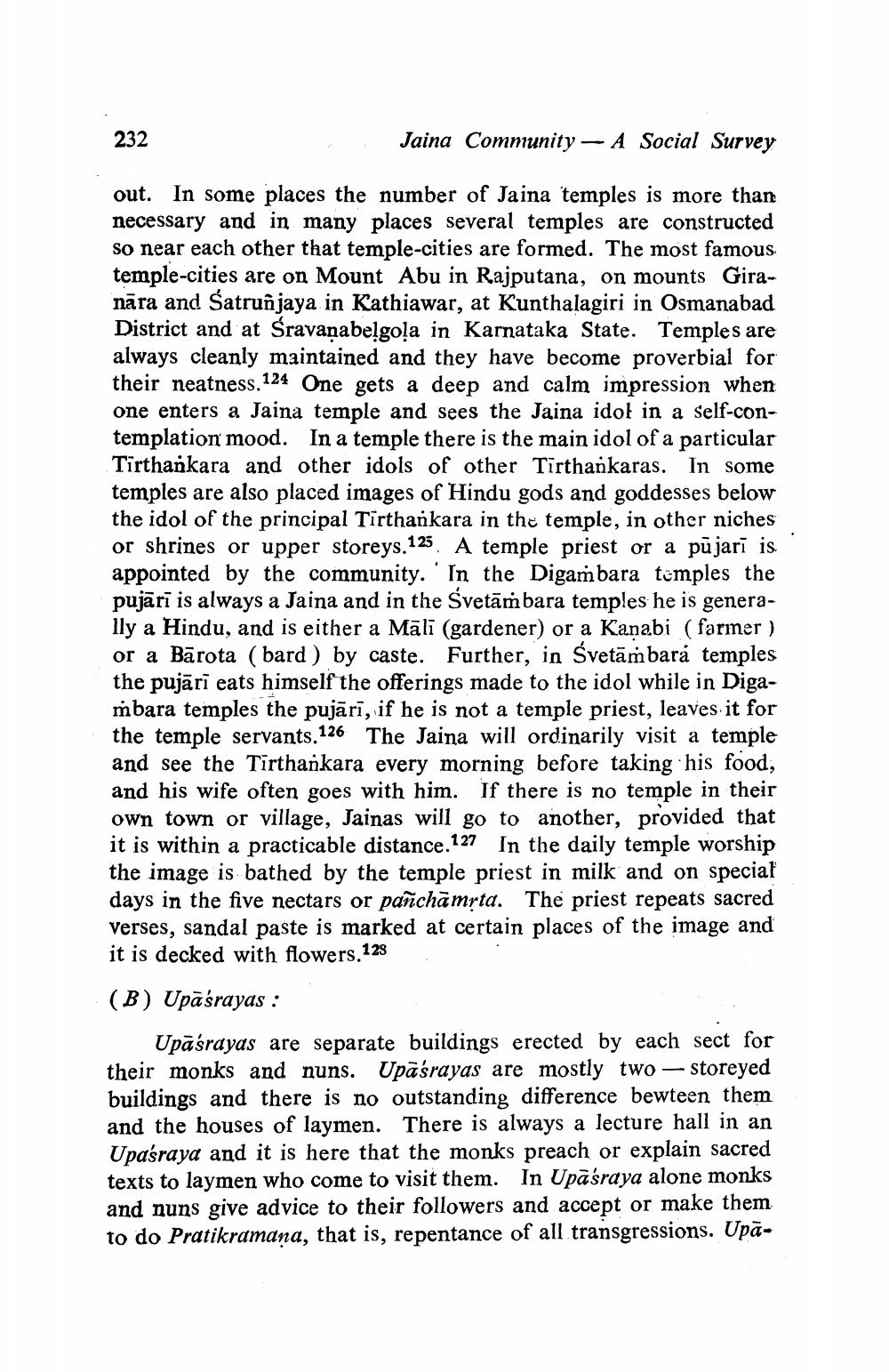________________
Jaina Community A Social Survey
out. In some places the number of Jaina temples is more than necessary and in many places several temples are constructed so near each other that temple-cities are formed. The most famous temple-cities are on Mount Abu in Rajputana, on mounts Giranāra and Satruñjaya in Kathiawar, at Kunthalagiri in Osmanabad District and at Sravanabelgola in Karnataka State. Temples are always cleanly maintained and they have become proverbial for their neatness.124 One gets a deep and calm impression when one enters a Jaina temple and sees the Jaina idol in a self-contemplation mood. In a temple there is the main idol of a particular Tirthankara and other idols of other Tirthankaras. In some temples are also placed images of Hindu gods and goddesses below the idol of the principal Tirthankara in the temple, in other niches or shrines or upper storeys.125. A temple priest or a pūjarī is appointed by the community. In the Digambara temples the pujārī is always a Jaina and in the Śvetām bara temples he is generally a Hindu, and is either a Mālī (gardener) or a Kanabi (farmer) or a Barota (bard) by caste. Further, in Svetambara temples the pujārī eats himself the offerings made to the idol while in Digambara temples the pujārī, if he is not a temple priest, leaves it for the temple servants. 126 The Jaina will ordinarily visit a temple and see the Tirthankara every morning before taking his food, and his wife often goes with him. If there is no temple in their own town or village, Jainas will go to another, provided that it is within a practicable distance.1 In the daily temple worship the image is bathed by the temple priest in milk and on special days in the five nectars or pañchamṛta. The priest repeats sacred verses, sandal paste is marked at certain places of the image and it is decked with flowers. 128
127
232
(B) Upasrayas:
Upasrayas are separate buildings erected by each sect for their monks and nuns. Upasrayas are mostly two- storeyed buildings and there is no outstanding difference bewteen them and the houses of laymen. There is always a lecture hall in an Upasraya and it is here that the monks preach or explain sacred texts to laymen who come to visit them. In Upasraya alone monks and nuns give advice to their followers and accept or make them to do Pratikramana, that is, repentance of all transgressions. Upa




